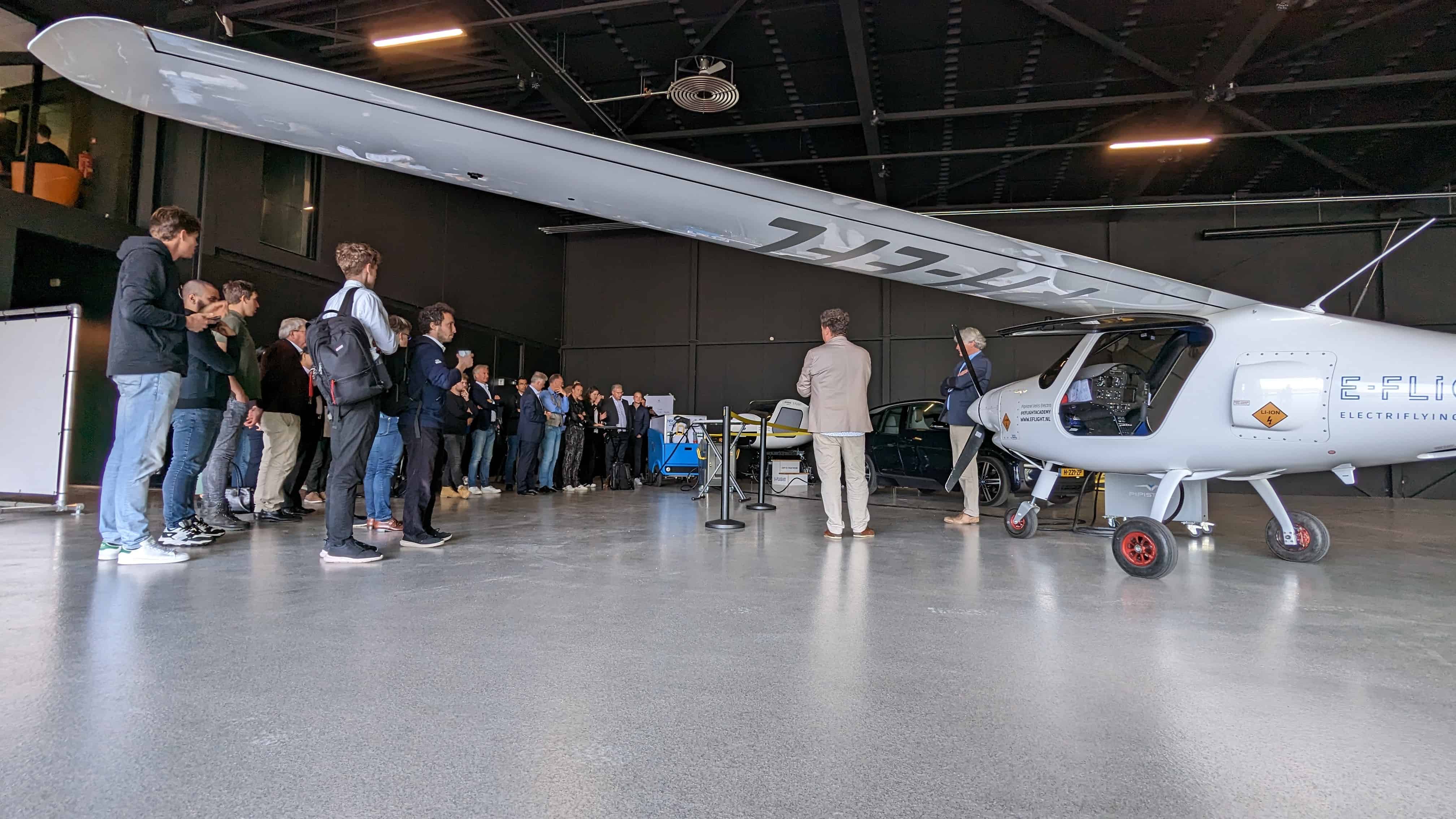
The first forty SeaBubbles have been ordered and are in production in Asia. They will be ready within a few months. That’s what Minze Walvius tells us, representative of the French start-up SeaBubbles in The Netherlands. These SeaBubbles are watercraft that use hydrofoil technology in combination with fly-by-wire technology from the aircraft industry so they can float above the water at a speed of 12 km/h. This means that passengers are not affected by any waves or seasickness.
There are five prototypes at the moment. One of them sails between two fixed points back and forth across Lake Geneva in Switzerland. Another one sails on the Seine in Paris and there’s also one cruising the Mediterranean Sea. The other two travel around as a showcase for interested parties such as municipalities who tentatively would also like to order a few.
Nice toy for rich folk
Walvius expects that the first people to sail around on them will most likely be private purchasers. Over the past few months, about a hundred wealthy Dutch people have called him to ask if it’s possible to buy one. “You must keep a price of about €180,000 to €200,000 in mind,” Walvius says. “If you’ve got a yacht which you sail a lot in, the SeaBubbles is an ideal means of transport to get to shore and back. These folks also buy expensive cars like Teslas. They cost that kind of money as well.”
There is a market for Seabubbles
Another good market might be the public transport sector as this craft solves a number of social problems. For example, it is 100% electric and there are no CO2 or soot emissions. Consequently, it would help to meet the EU’s climate target of becoming CO2-neutral by 2050. Moreover, the craft may turn out to be cheaper than, for instance, the Waterbus, a boat that functions as a regular bus and sails along the Meuse River between Rotterdam and the Drechtsteden (Drecht cities).
In addition, the reliance on SeaBubbles as a means of public transport could become an alternative to the car, according to Menno Bijnagte of Deal Drecht Cities. He is looking into this option for the Drechtsteden. “There are plenty of traffic jams in this region. This is a cheaper solution for alleviating pressure on existing road networks than constructing a bridge over the Meuse River for one thing.”
Although at moment by law there still has to be a captain on the SeaBubbles. But as soon as the law makes it legally possible to operate the SeaBubbles by remote control without the need for a captain behind the wheel, the boat could become an inexpensive form of public transport. And according to Bijnagte, that is what they’re aiming for and what is already technically possible.
There are no rules
The reason why a larger version of the SeaBubbles cannot immediately be used as public transport yet, is that craft carrying more than 12 people are subject to certain regulations, Walvius states. Furthermore, a place is needed for the jetty where the boat can be recharged as well. “The rules for this type of craft have yet to be invented. After all, craft with these technological capabilities have never been around before. This is the first of its kind. We are currently in talks about this with all the parties involved.”
These include the Drecht cities that have expressed interest in purchasing the SeaBubbles as a means of public transport, the province, the Rijkswaterstaat (executive agency of the Ministry of Infrastructure and Water Management) and the Dutch House of Representatives. “So far, these discussions have been positive,” says Walvius. But in his view, experience has taught us that it takes time to come up with good rules. “If you want to do that properly, it’ll take you two or three years.”
Water taxi in Miami
The SeaBubbles that are currently being made will soon move to locations all over the world. There is an entrepreneur in Miami with a water taxi company who wants to order a number of them according to Walvius.
The aim is to increase production step by step, Walvius explains. “We constantly want to improve the model.”
The engine can run at 100 km/h, but is set to a maximum of 33 km/h, as stated on their website. But this speed can be increased in the future.
Flying start
SeaBubbles raised €11.4 million through crowdfunding for the development of the concept, says Walvius. The European innovation fund Horizon 2020 has also invested in it.
Is this the commute of the future?🚤
Exciting to test the @SeaBubbles innovative flying water car at the #RiDaysEU! pic.twitter.com/GvjIyWi3Aq
— Jean-Eric Paquet (@JEPaquetEU) September 26, 2019
Although the first order is supposed to roll off the conveyor belt at the beginning of next year, these kinds of investments are still essential for developing the concept. After all, new models are back on the drawing board. The prototype that is now going into production can take up to five passengers (including the pilot). New models should be able to transport up to a few dozen people.
Jetties
Aside from the boats, the company also wants to build jetties with charging stations for the SeaBubbles, says Walvius. “We’re hoping to be able to bring the manufacture of these to The Netherlands.”







